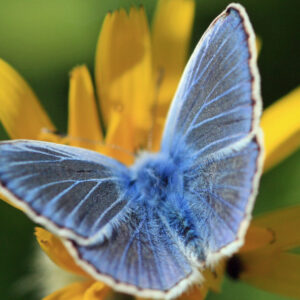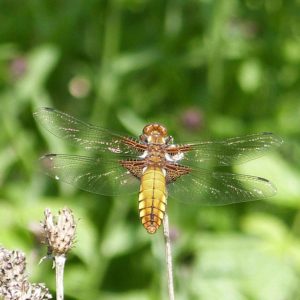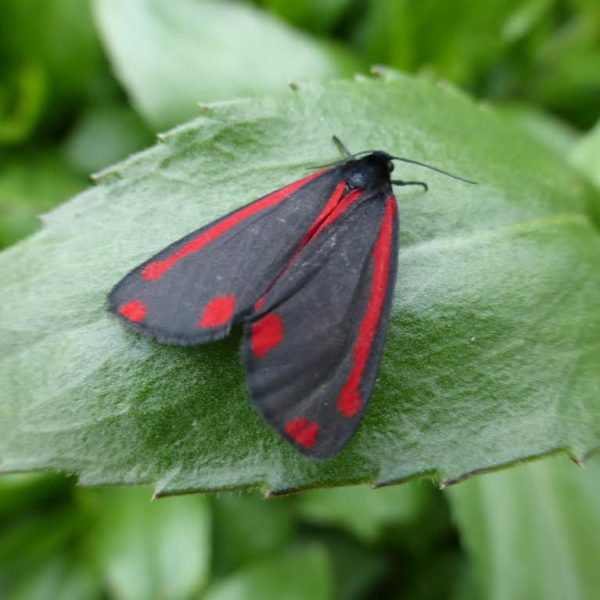Key Facts
- Wingspan: 3-4.5cm
The Cinnabar is a common moth of rough grassland and hedgerows, gardens and waste ground, where the black- and yellow-banded caterpillars feed on Common Ragwort, other ragworts and groundsels.
Adults are on the wing during the summer, flying in the sunshine, but also at night. They are easily disturbed, fluttering up from their feeding plants. The caterpillars pupate in autumn, spending the winter as cocoons on the ground, before emerging as moths the following summer. The bright colouring of the adults and caterpillars warns predators that they are unpalatable, having ingested the poisonous ragwort plants.
How to Identify
The Cinnabar is slate-black with two red spots and two pinky-red stripes on the rounded forewings. Its hindwings are pinky-red and bordered with black. It can be distinguished from the similar burnet moths by the broader wings and bars of red instead of spots.
Where to Find
Widespread.
How people can help
Numbers of Cinnabar Moths are reported to have fallen by 83% in the last 35 years, possibly due to the eradication of poisonous ragwort in livestock fields. The Wildlife Trusts are working closely with farmers and landowners to promote wildlife-friendly practices. You can help too: plant nectar-rich borders and shrubs to attract moths and butterflies into your garden, and leave that patch of ragwort alone! To find out more about encouraging wildlife into your garden, visit our Wild About Gardens website: a joint initiative with the RHS, there’s plenty of facts and tips to get you started.
Did you know?
The Cinnabar Moth is named after the red mineral, Cinnabar, an ore of the metal Mercury.
Similar Species

Common Blue
- Invertebrates

Common Woodlouse
- Invertebrates

Four-Spotted Chaser
- Invertebrates

Speckled Wood Butterfly
- Invertebrates
